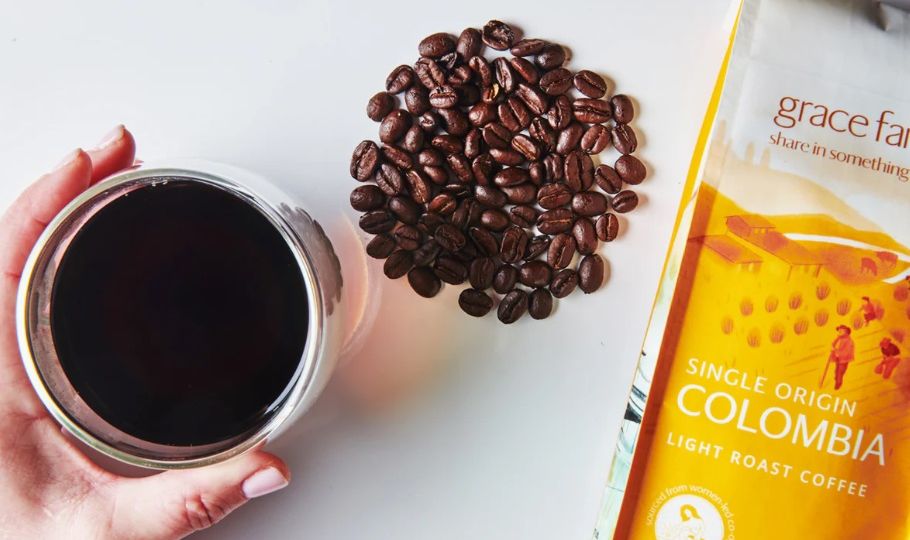
Colombian single origin coffee holds a prestigious place in the world of java. Defined by its exclusive geographic origin, single-origin coffee boasts a unique flavor profile that reflects its native soil and climate conditions. This focus on a single source contrasts with blends that mix beans from various locations, offering a more complex and variable taste.
Colombian coffee, specifically, is celebrated for its rich, smooth, and flavorful character. Grown primarily in the mountainous regions of Colombia, these Arabica beans flourish under the shade of banana and rubber trees, receiving just the right amount of rainfall and sunshine. The result? A cup of coffee that’s not only aromatic and acidic but also brings a hint of caramel or chocolate, depending on the region. Such distinct flavors make Colombian single origin coffee a favorite among both connoisseurs and casual drinkers alike.
Key Takeaways
- Unique Flavor Profiles: Each bean tells the story of where it’s from, offering flavors ranging from sweet and nutty to bold and fruity.
- Geographical Diversity: Colombia’s landscape offers ideal coffee-growing conditions, contributing to the diverse flavor notes.
- Cultural Significance: Coffee is more than just a beverage in Colombia; it’s a way of life and a source of pride for its people.
- Economic Impact: The coffee industry plays a crucial role in supporting Colombian economies, particularly in rural areas.
- Sustainability Efforts: There’s a growing emphasis on sustainable farming practices to ensure the health of the land and the well-being of future generations.
Distinctive Qualities
Colombian single origin coffee is renowned for its exceptional quality and distinctive flavors that set it apart in the coffee world. These beans often present a delightful blend of vanilla, light brown sugar, and cocoa notes, offering a rich and aromatic experience that appeals to a broad spectrum of palates.
This unique flavor profile is a result of the meticulous cultivation and processing practices found throughout Colombia’s coffee-growing regions. Each sip reflects the high standards of production, from the careful selection of beans to the precision in roasting, ensuring a premium quality cup every time.
Geographical Diversity
The varied landscapes of Colombia play a crucial role in shaping the distinct flavors of its coffee. With regions ranging from high mountain areas to lush valleys, each area offers a unique combination of altitude, climate, and soil that contributes to the growth of coffee beans with unique characteristics. For example, beans grown in the cooler climates of the Andean regions tend to develop a brighter acidity and deeper fruit notes, while those from warmer, lower altitudes might exhibit a smoother, more balanced profile.
This geographical diversity not only enhances the complexity of flavors but also allows coffee enthusiasts to embark on a flavorful journey through Colombia’s rich coffee culture with each cup.
Cultural Heritage
The history of coffee in Colombia is as rich and robust as the coffee itself. Coffee was first introduced to Colombia in the early 18th century by Jesuit priests. Over time, it became a staple crop, deeply intertwined with the nation’s culture and traditions.
Today, coffee is more than just a beverage in Colombia; it’s a significant part of daily life and celebrations, often serving as a centerpiece for social gatherings and discussions. The passion for coffee is passed down through generations, making it a symbol of Colombian heritage and pride.
Economic Impact
Coffee is a cornerstone of Colombia’s economy. It is one of the country’s top exports and supports millions of Colombians, including many smallholder farmers for whom coffee cultivation is a primary source of income. The industry contributes significantly to rural development, providing employment and economic stability in areas that might otherwise struggle economically.
The relationship between Colombian people and their coffee goes beyond agriculture; it’s a vital component of the nation’s identity and economic structure.
Sustainability and Ethical Practices
In recent years, Colombia has made significant strides in promoting sustainable and ethical practices in coffee production. Many Colombian coffee farmers have adopted environmentally friendly practices, such as organic farming, water conservation, and the use of natural pest controls, which help maintain the health of their rich ecosystems.
Additionally, the emphasis on fair trade principles ensures that profits are fairly distributed, supporting community development and improving the livelihoods of the farmers. These efforts not only enhance the quality of the coffee but also ensure that the production process aligns with global standards for sustainability and ethics, making Colombian coffee a leader in both taste and responsibility.
Flavor Profile
Colombian coffee is celebrated globally for its rich, diverse flavor profiles that appeal to a wide range of coffee lovers. Typically, these coffees exhibit a medium to full body with a clean, crisp acidity that is often described as bright. The flavors can range widely depending on the specific region where the beans are grown. For instance, you might taste hints of nutty and chocolate in one batch, while another offers notes of vanilla, caramel, and fruits such as apples and blackberries.
This variety is due to Colombia’s vast topography, which provides ideal growing conditions for coffee beans, each region imparting its unique characteristics to the beans. The global renown of Colombian coffee is a testament to its ability to deliver consistently high quality and deliciously complex flavors that resonate well with coffee aficionados and casual drinkers alike.
Brewing the Perfect Cup
To truly appreciate the distinct flavors of Colombian single-origin coffee, the brewing method plays a crucial role. A pour-over method, such as using a Chemex or V60, is highly recommended because it allows the subtle flavors and aromas to shine through. This method involves pouring hot water over coffee grounds in a filter, letting the water seep through the coffee and into a carafe below.
It’s important to use freshly ground coffee and hot water just off the boil (about 195°F to 205°F) to extract the best flavors. The grind size should be medium-fine, similar to sea salt, to ensure a balanced extraction that fully captures the essence of Colombian single-origin coffee without bitterness.
Market Trends and Consumer Preferences
In recent years, there has been a noticeable shift in global coffee consumption trends, with an increasing demand for single-origin coffees, including those from Colombia. Consumers are becoming more interested in the traceability of their coffee, wanting to know exactly where their beans come from and how they are grown and processed. This trend aligns with a broader movement towards ethical consumption, as coffee drinkers increasingly prefer products that are sustainably sourced and support fair trade practices.
Colombian coffee, with its rich heritage and commitment to quality and sustainability, is perfectly positioned to meet these consumer preferences. The popularity of Colombian single-origin coffee continues to grow, as it not only offers exceptional taste but also a compelling story of tradition, craftsmanship, and care from bean to cup.
FAQs
What makes Colombian coffee different from other coffees?
Colombian coffee is distinct primarily because of its smooth, well-balanced flavor profile that often includes notes of fruit, caramel, or nuts. This uniqueness is largely due to Colombia’s ideal coffee-growing climate and rich volcanic soil, which are perfect for Arabica beans.
How much caffeine is in Colombian coffee?
Colombian coffee, which is predominantly Arabica, typically has less caffeine compared to Robusta beans. Expect a caffeine content that’s about 1.1% to 1.5% by weight, which is moderate and suitable for those who enjoy coffee throughout the day without overwhelming stimulation.
What’s the best way to brew Colombian coffee?
To best enjoy Colombian single-origin coffee, use methods that allow its unique flavors to come through, such as pour-over, French press, or Aeropress. Each method emphasizes different aspects of the coffee, from clarity and brightness to rich body and texture.
Final Thoughts
Colombian single-origin coffee continues to capture the hearts of coffee enthusiasts around the globe. Its broad appeal lies in its rich flavor profile, which can range from fruity and mild to rich and full-bodied, depending on the region it’s grown in. This variety makes Colombian coffee incredibly versatile and appealing to a wide range of palates.
Moreover, the coffee culture in Colombia, deeply woven into the country’s fabric, contributes to the high quality of the beans produced. This is complemented by the nation’s commitment to sustainable practices and ethical sourcing, aligning with global trends towards more conscientious consumption.









